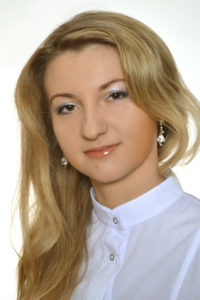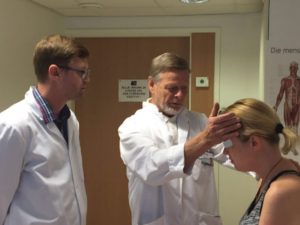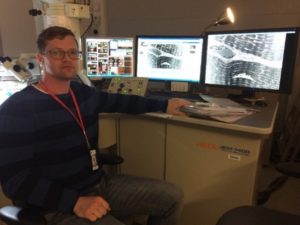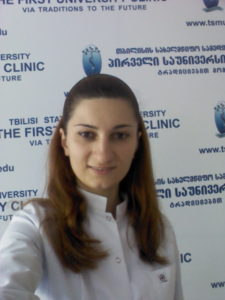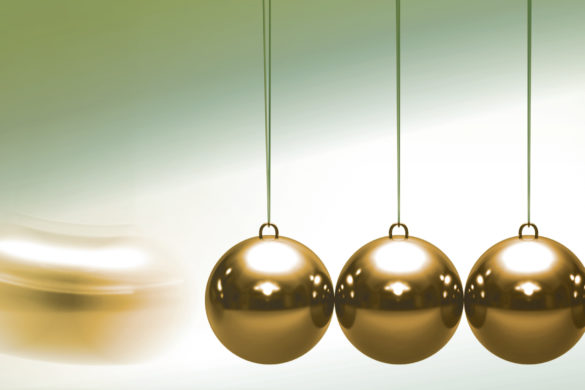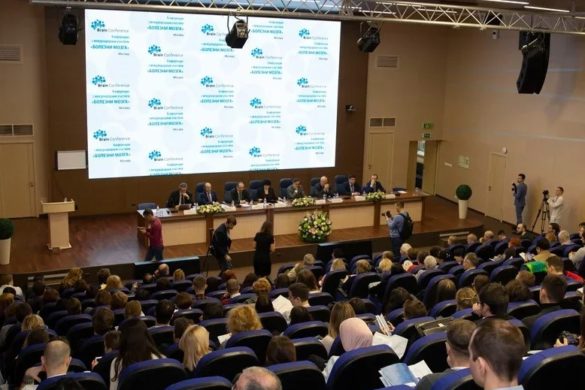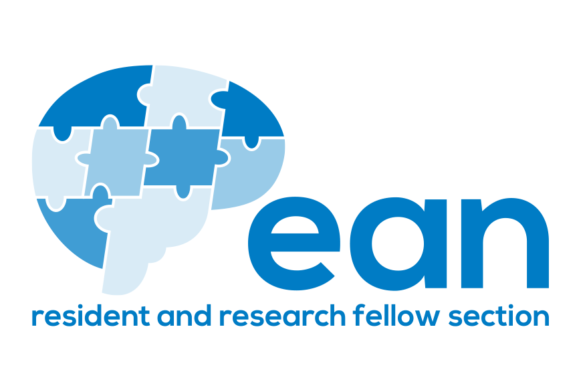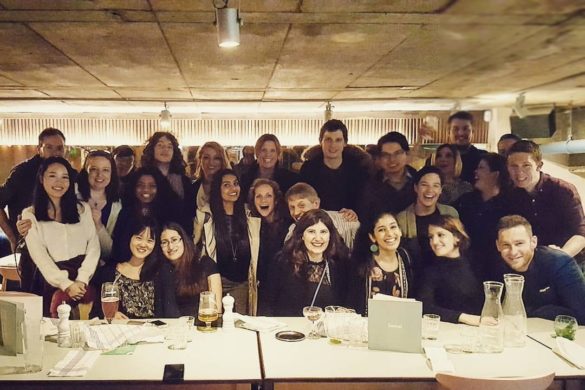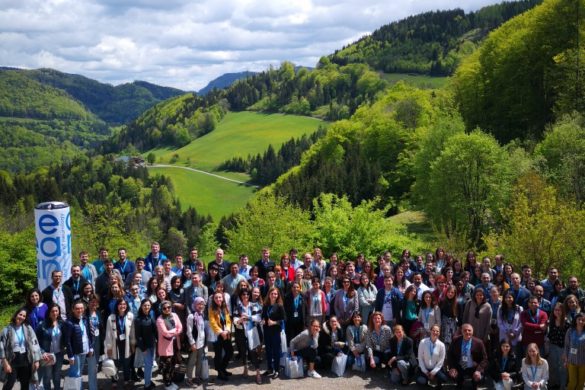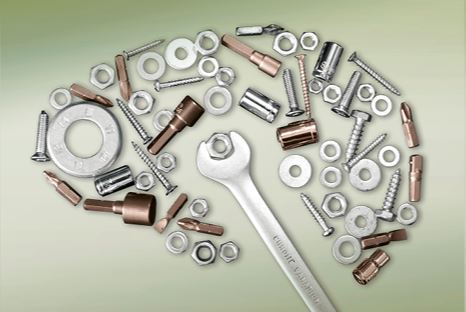Report from Dr Iuliia Iakubenko, from Kharkiv, Ukraine visiting the Dipartimento ,,G.F. lngrassia” Università degli Studi di Catania, Catania, Italy under the supervision of Prof. Mario Zappia
First of all, I would like to thank EAN and Professor Maria Zappia for giving me such a great opportunity to study in the University Hospital of Catania, Italy and have a valuable experience in neurology, EEG, ENMG, transcranial magnetic stimulation and physiotherapy.
As a participant of Department-to-Department programme I spent really fruitful and great time from 19.06.2017 to 28.07.2017 at the Department “G.F. Ingrassia”, Section of Neurosciences, University of Catania, Italy
I would like to thank once more Professor M.Zappia, Professor F.Patti, Professor V.Sofia, Professor G.Mostile, Professor A. Nicoletti, Doctor L.Raciti, Doctor M.Proietto, Doctor D.Contrafatto, Doctor S.Fermo, and all residents for all their kindness and patience to me. When I needed, they were always helpful to explain the problem to solve, the procedure and also made sure that I understood everything.
The high level of professionalism of each member of this department impressed me greatly: excellent doctors, wonderful technicians, devoted nurses.
Under the leadership of M. Zappia, Professor F.Patti, Professor V.Sofia, Professor G.Mostile I had every day of very intensive studying of neurology. During my fellowship I did:
- deep study of patients with extrapyramidal disorders, epilepsy and multiply sclerosis;
- participation in neurology and interdisciplinary rounds;
- learning EEG, ENMG and TMS;
- learning new advanced techniques in neurology;
- I was lucky to be present at the lecture of Professor Fabio Benfenati (Center of Synaptic Neuroscience and Technology, Institute of Technology, University of Genova) “From Synaptic Physiopathology to Hybrid Technology”, and lecture of Professor Vincenzo Esposito (Department of Neurosurgery, Università “LaSapienza” di Roma) “La chirurgia dell’ epilepsia”.
- I was also lucky to be present at finishing specialization of residents. I was impressed with high level of knowledge that the residents in University Hospital of Catania have.
- Also I had valuable experience in learning physiotherapy and rehabilitation in patients with extrapyramid disorders and multiple sclerosis.
The main goal of my stay was to expand knowledge in patients with extra pyramidal disorders, epilepsy and multiply sclerosis.
However, I would like to say, that I got much more!
I met very intelligent and professional doctors, observed European teaching process, and how close Professors can communicate with doctors, residents, patients.
And so I felt like in a big close family.
Now I am going to share my knowledge with my colleagues in hospital in Kharkiv. In addition, I will present all information at local neurological conference.
No doubt, this experience will help me and my colleagues in the future to improve the examination and treatment of patients with extrapyramidal disorders, epilepsy and multiply sclerosis.
In conclusions, I would like to say, that it was a great pleasure and perfect experience for me to study in the University Hospital of Catania.
I will highly recommend Prof. M.Zappia, his team and his department to next winners of this exchange Program.
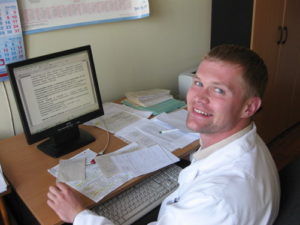
Report from Dr Sergei Kurbatov, from Voronezh, Russia visiting the Tampere
Neuromuscular Research Center, University Hospital, Tampere, Finland under the supervision of Prof. Bjarne Udd, MD, PhD
In 2017 European Academy of Neurology (EAN) honored me by granting clinical fellowship of six weeks, which took place in the Neuromuscular Research Unit of Tampere (NMRUT) and the associated Folkhälsan Institute of Genetics, Biomedicum, Helsinki (FIGBH), Finland, under the supervision of professor Bjarne Udd. During this period I participated in clinical and instrumental investigation of the patients, clinical and scientific meetings, as well as in the conference, dedicated to the scientific work of the FIGBH. 3 days of the week I was training at the FIGBH and 2 days in the NMRUT.
In the NMRUT I got acquainted with specifications of collecting patient’s history and clinical investigation, planning diagnostic approaches, interpretation of the results of muscle biopsy, molecular pathology, biochemical, neurophysiological exams, muscle MRI. The exams were usually performed in patients of 20- 80 y.o. with suspected limb-girdle and distal myopathies, inflammatory myopathies, myasthenia, Lambert-Eaton syndrome, myotonias, paraneoplastic myopathies, and various hereditary and acquired polyneuropathies and motoneuron diseases.
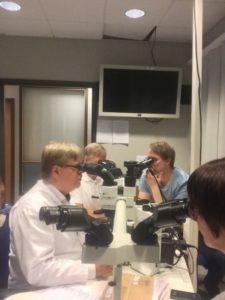
Fig. 2. Revive of muscle biopsy samples (from left to right): pathologist Dr. Hannu Haapasalo, Prof. Bjarne Udd, Dr. Manu Jokela, Dr. Johanna Palmio
Daily I was participating in the meetings of prof. Bjarne Udd group where difficult clinical cases were presented; examining the patients (fig. 1.), discussing preliminary diagnosis, determining the tactics of the examination and selecting the muscle for the biopsy to be done and subsequently performed the biopsy; together with the neurogeneticists and neuropathologist we were analyzing the biopsy stains (fig. 2).
At the FIGBH, I was trained in the theoretical issues of Sanger sequencing, Next Generation Sequencing, and technical issues of preparing biopsy samples.
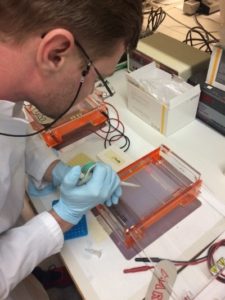
I had a chance to carry out all the stages of the DNA analysis myself: selecting primers, preparing samples for PCR, conducting PCR with the program “Touch Down”, checking the PCR results with the agarose gel, and also search for the mutations in the LIPE gene, as well as evaluating the results of the sequencing (fig. 3).
On one of the clinical conferences I presented few personal complicated diagnostic cases, which I prepared in advance. As well as any other employee of the Center I was allowed to use all available informational sources. If some question popped-up, Bjarne and his team were very open for the brainstorming.I was offered the possibility to perform all the stages of freezing muscle biopsies, including preparing the stains of various types of coloring of the material. One day of the week was dedicated to the electron microscopy of the muscles, where I witnessed the detection of previously undescribed changes in the muscles (fig. 4). Apart this I was also performing various neurophysiologic tests.
Apart my professional activities I discovered picturesque Helsinki, some small Finnish cities, a unique church hidden in the cave – Tempelplatz, visited Tallin, having a great cruise trip from Helsinki. At the end of my stay I became familiar with the peculiarities of clinical, instrumental, pathological, and research aspects of neuromuscular disorders. I got a huge amount of information needed in my practical work. This course made it possible to clearly outline further priorities for improving my work.
I am sincerely grateful to the EAN to offer me a chance to improve my professional skills and to get acquainted with new colleagues, good people and cheerful environment. I personally thank Bjarne Udd, Manu Jokela, Peter Hackman and Marco Savarese.
Report from Dr Nino Khizanishvili, from Tbilisi, Georgia visiting the Oxford Neuromuscular Centre, John Radcliffe Hospital, UK under the supervision of Dr. David Hilton-Jones
Thank you very much for the clinical fellowship award that gave me the great opportunity to visit Oxford Neuromuscular Centre as well as I would like to thank a lot to Dr. Hilton-Jones and all his kind team for receiving me well.
I studied neuromuscular patients‘ medical hystories, attended outpatient clinic consultations, neurologically examined patients with various neuromuscular conditions. Also I had a good possibility to see the muscle samples of the patients in microscope thanks to neuropathologist – Dr. Monika Hofer. I went to neurophysiology department – saw some electromyography examinations, as well as I attended ward rounds at inpatient clinic and also ground rounds, where some dificult and interesting patients‘ cases were presented and discussed.
I markedly improved my clinical experience/knowledge thanks to Dr. Hilton-Jones, who really received a lot of neuromuscular patients; among them I saw same very very rare cases too, for example a patient with Brown Vialetto Van Laere Syndrome, Central Core Diasease and s.o…
I have seen „Myasthenia Gravis: Association of British Neurologists‘ Managemet Guidelines“ – the recommendations from British neurologists how to diagnose and treat myasthenia gravis that I will share with my colleages and will use for my patients in Georgia.
During my stay in Oxford I attended „42nd Oxford Muscle Symposium“ where a lot of interesting muscle sample cases were presented by many colleagues from different countries.
And the most important is – I got the experience in approaches and archievements of Britain medical/healthcare system that I think is the best in the world.
I returned to my department in Georgia with new ideas and plans to improve our neuromuscular/helthcare standarts.
And of course I believe our good relationships with Oxford colleagues will continue in the future too.
I am very grateful to EAN for this kind support. Thank you very much. A lot of thanks to my Department head – Prof. M. Beridze and Prof. N. Kvirkvelia who promoted me to go to the Centre. And special thanks to Dr. D. Hilton-Jones for the great cooperation.

